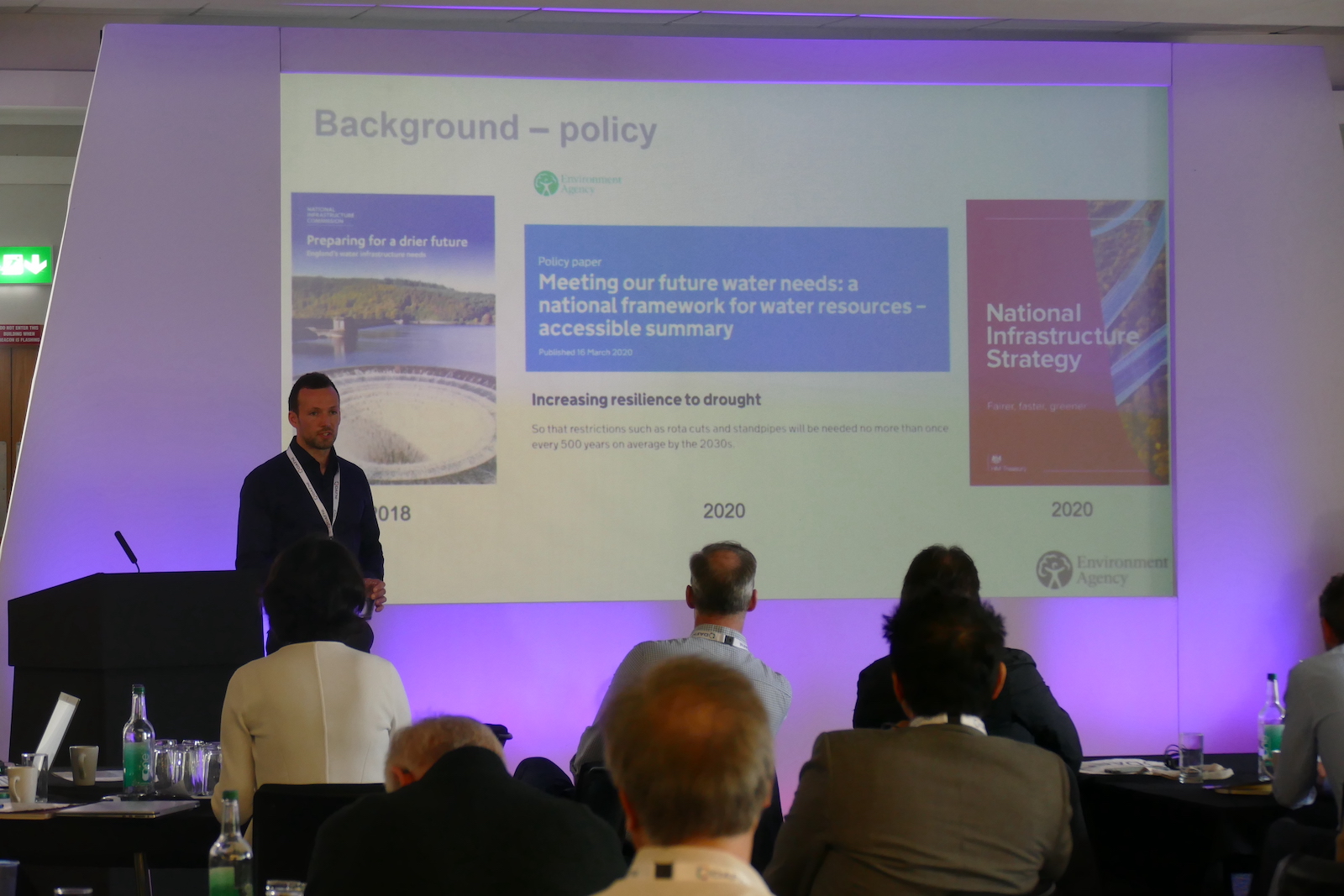
Dr Jonny Wilson
At the DAFNI Conference 2022, Dr Jonny Wilson, Water Resources Modelling Lead at The Environment Agency, introduced an ambitious national scale water modelling project involving regulators, academic researchers and consultants.
The collaboration and modelling for the National Systems Simulation Modelling is taking place on DAFNI and allows the team to collaborate virtually, streamline workflows, avoid duplication of data storage, and run multiple scenarios in a much more efficient way
Jonny explains:
The National System Simulation Modelling project has been commissioned by RAPID, the Regulators Alliance for Progressing Infrastructure Development and the project is being delivered by academic project partners and consultants, with the team being led by University of Oxford and University of Bristol, Doug Hunt Consultants and Helen Gavin at Ricardo. The Environment Agency are supporting the project with a group of water resources modellers.
DAFNI have provided the computational platform for the project and built the foundation upon which the project has been developed.
The project is examining the challenges that water resources face and the large-scale solutions that could help meet those challenges.
In March 2020 the Environment Agency published a National Framework for water resources and set out the strategic water needs for England across all sectors up to 2050 and beyond.
It endorsed two recommendations previously made by the National Infrastructure Commission in 2018: to reduce leakage by 50% by 2050, and to increase resilience of public water supplies from 1 in 200 to 1 in 500. Both the recommendations are now in the National Infrastructure Strategy published in 2020.
The government has recognised there is a need to increase the resilience of public water supplies in England and also to ensure that they are resilient to additional pressures from population growth, climate change and protecting the environment.
New major water supply options urgently required
We need to develop new major supply options to help tackle these pressures, meet the recommendations, and to look closely at demand management.
If we don’t do anything between 2025 and 2050, we will have a national deficit of around 4,000 mega litres of water each day, this is the jaws of death scenario that James Bevan (Chief Executive of the EA) has spoken about.
In recognition of these challenges, OfWAT have put forward £500 million of funding for water companies to develop strategic infrastructure schemes that are construction-ready during the 2025-2030 period. It has also set up RAPID, the Regulators Alliance for Progressing Infrastructure Development, to oversee the process. The RAPID timeline aligns with the Water Resources Management Planning (WRMP24 plan) and the regional planning component.
The solutions themselves comprise six reservoirs, six long distance water transfers, five water reuse options, and one combined supply option. They are generally large scale and many of them act to join up the water resources system in a more integrated way.
When deciding on the best combination of solutions there’s a trilemma of cost, environmental impact, and security of supply to population growth and drought resilience and climate change.
The regional groups and water companies are doing their own modelling and looking at the best value set of solutions. However, it is also important for the regulators to have their own independent view on the process as well, including the regulator Ofwat looking at the affordability side of things, and the Environmental Agency carrying out assessment of risks to the environment.
Modelling strategic solutions
Our modelling focuses on the security of supply and the national water resources system simulation modelling is giving us insights into the drought resilience benefits of the strategic solutions.
Termed the National System Simulation Modelling project, it has two aims:
- To give regulators shared and independent insight into the benefits, dependencies and risks of the strategic solutions, in terms of drought resilience
- To get a national scale holistic view of the strategic solutions and to look at the trade-offs between them.
We are modelling a national large-scale top down view compared to the detailed bottom-up modelling that the water companies and the regional groups are doing. The idea is not that one will replace the other but that they will work in combination to help improve our collective understanding.
We are working collaboratively and transparently with water companies and solutions teams to make sure that there are appropriate representations of their strategic solutions and also the water supply system for the relevant parts the country in the model.
The National Scale model is important because it can capture large scale system interactions – for example, long distance transfers between water resources regions will work dynamically with other parts of the supply system such as reservoirs. To capture those dynamic interactions we need a large scale model.
Due to the spatial characteristics of drought and the large-scale nature of the solutions especially, long-distance water transfers are likely to be more susceptible to widespread and spatially correlated drought events that will be captured in a large scale model.
Water Resource Model of England and Wales (WREW)
We are using the Water Resource Model of England and Wales (WREW) originally created for the MaRIUS project and subsequently used in the 2016 study by Water UK and in the 2020 National Framework. It runs in the Wathnet software hosted on DAFNI platform.
It captures a lot of the large-scale water supply infrastructure such as reservoirs, surface water abstraction, ground water extraction, and the connectivity of the system.
It’s a simplification of reality as are all models, however it covers 90% of England and Wales’ populations, 80 catchments, 70 water resource zones and all supply sources greater than 2 mega litres per day.
In order to sense check the results from the model, we carried out a national validation exercise by comparing the simulated storage in WREW with the simulated storage outputs from water company models. The storage profiles compare quite well so we can have some confidence in the model outputs.
In terms of the latest results from the NSSM project, there are three worth mentioning:
1.The strategic solutions act to increase the drought resilience for key areas of water stress in the East and South East of England
2.The solutions can maintain drought resilience in the face of additional pressure from more ambitious environmental protection, risk of not achieving targets for reducing consumption and leakage by 2050, and from more severe climate change.
- There are no notable impacts between the donor and recipient areas other than sensitivities for the Trent Catchment during rare large scale drought events.
All the findings have been written up into a Phase 2 report which was published in October 2022 and is available online.
So how has DAFNI helped?
DAFNI has helped the project to ensure it’s been a success. The national modelling team is a virtual team, we sit in different organisations and distinctly different geographic locations across the country and DAFNI joins the dots and lets us work together.
DAFNI provides a virtual workspace for collaboration – otherwise each organisation would have to set up its own modelling and computational systems.
The second way DAFNI helps us is by streamlining workflows. The streamlining takes place in two ways – we are using the Weather@ home climatology data set for the modelling, it contains 100 30-year replicates for the near future and far future versions of the model. If you run the model manually you have to run it 100 times which is time consuming and onerous. The NSSM team has worked with DAFNI to use batch mode so we can run simulations in a much more time efficient way.
The other way DAFNI has really helped us to streamline our workflows is around the way we handle scenarios. With the model we are investigating quite a lot of scenarios – nine scenarios running 100 times. We worked with DAFNI team to set up a loop function that boils this down into scenarios that have the same model topology or different input data, or that have different model topology and the same input data. The result is that instead of running nine workflows, we can just run two which is a much more time efficient process.
DAFNI provides us with more of an end-to-end solution or an integrated way of running the model.
We were initially using the DAFNI model to run the water resources model and we were doing a lot of the pre-processing on our desktop machines or local computational resources. We were also downloading all the results from DAFNI and post-processing them on our own machines. We’ve worked with DAFNI to improve this process so now we only use our own machines to create the model file and we use DAFNI for everything else – for example, we run pre-processing scripts on DAFNI to creat the model inputs, , we run the model on DAFNI and we also export the outputs from the model using post processing scripts on the DAFNI system to help with the visualisation.
This has a number of benefits – time savings as we are not uploading and downloading data constantly, less overall storage is used – the same dataset isn’t sitting on multiple hard drives or in multiple different locations, and there is less chance of human error as we have one instance of each of these components rather than separate permutations potentially edited by different people.
For the visualisation, we run post processing scripts on DAFNI. This requires a degree of the user being up to speed with coding and more technical aspects. We are working with DAFNI to simplify the interface and make a simple user interface so that higher level stakeholders can go in and explore and engage with the results. This has really helped us to make the project and the outcomes of the project more accessible to a range of different stakeholders.
Next steps for the National System Simulation Modelling project
In phase 3 we’ll be looking across the drought resilience of different combinations of options with further work exploring the widespread droughts and the implications of those on the strategic solutions.
We’ll be combining the outputs from the modelling with information on cost and environmental risks to get a more holistic view on the solutions.
As for the future of the modelling – we would like to add more variables to optimise, to move towards a more multi-objective optimisation including areas such as carbon cost, environmental flow levels and scenarios for other sector demands which will become more important in the future. There are also synergies to be made with other modelling projects both within the EA and more widely, for example around flooding and the use of reservoirs for storing flood water, and also thinking about the regulator’s water resources modelling strategy.
We have previously done some work with Julien Harou, Professor of Water Engineering at University of Manchester, setting up an aggregate type national supply demand model. We think we could link that aggregate model with the more complex simulation modelling I’ve talked about today and come up with a broader modelling strategy for the next steps.
We’ll also be making enhancements to the work we do with DAFNI – around post processing as well as exploring integration with other models on DAFNI – there is a wealth of models and data on DAFNI that we could tap into.
Jonny Wilson is a senior officer in the Environment Agency, where he leads on establishing in-house capabilities for national water resources modelling, to help support regulatory decision-making processes. His career in the environmental sector began only recently in 2018, when he joined the Environment Agency to work on the National Framework for Water Resources project, which helped set out England’s long-term water needs, and the scale of action required to ensure resilient supplies.
Interested in collaborating with DAFNI?
If you would be interested in using DAFNI, would like to access Data on DAFNI or involve us in a new project, we would like to hear from you. Please complete your details on the contact form using the link and we will be in contact with you by email.

